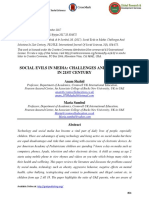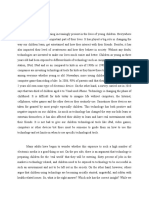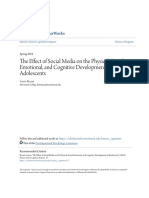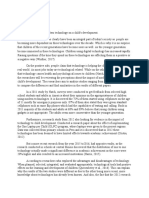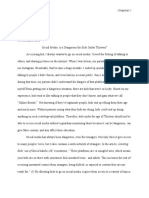0% found this document useful (0 votes)
81 views21 pagesChapter 1 With Page Number
This document summarizes a study on the effects of social media and technology usage on children. It finds that children's screen time increased significantly during the pandemic. While social media allows connection and information sharing, overuse can negatively impact mental health and lead to social comparison. The study aims to understand children's engagement with devices, the impact of screen time on their lives, and both risks and benefits of social media use. It seeks to provide guidance for parents on helping children develop healthy online habits and navigate risks.
Uploaded by
Rachell GulayanCopyright
© © All Rights Reserved
We take content rights seriously. If you suspect this is your content, claim it here.
Available Formats
Download as DOCX, PDF, TXT or read online on Scribd
0% found this document useful (0 votes)
81 views21 pagesChapter 1 With Page Number
This document summarizes a study on the effects of social media and technology usage on children. It finds that children's screen time increased significantly during the pandemic. While social media allows connection and information sharing, overuse can negatively impact mental health and lead to social comparison. The study aims to understand children's engagement with devices, the impact of screen time on their lives, and both risks and benefits of social media use. It seeks to provide guidance for parents on helping children develop healthy online habits and navigate risks.
Uploaded by
Rachell GulayanCopyright
© © All Rights Reserved
We take content rights seriously. If you suspect this is your content, claim it here.
Available Formats
Download as DOCX, PDF, TXT or read online on Scribd
/ 21




